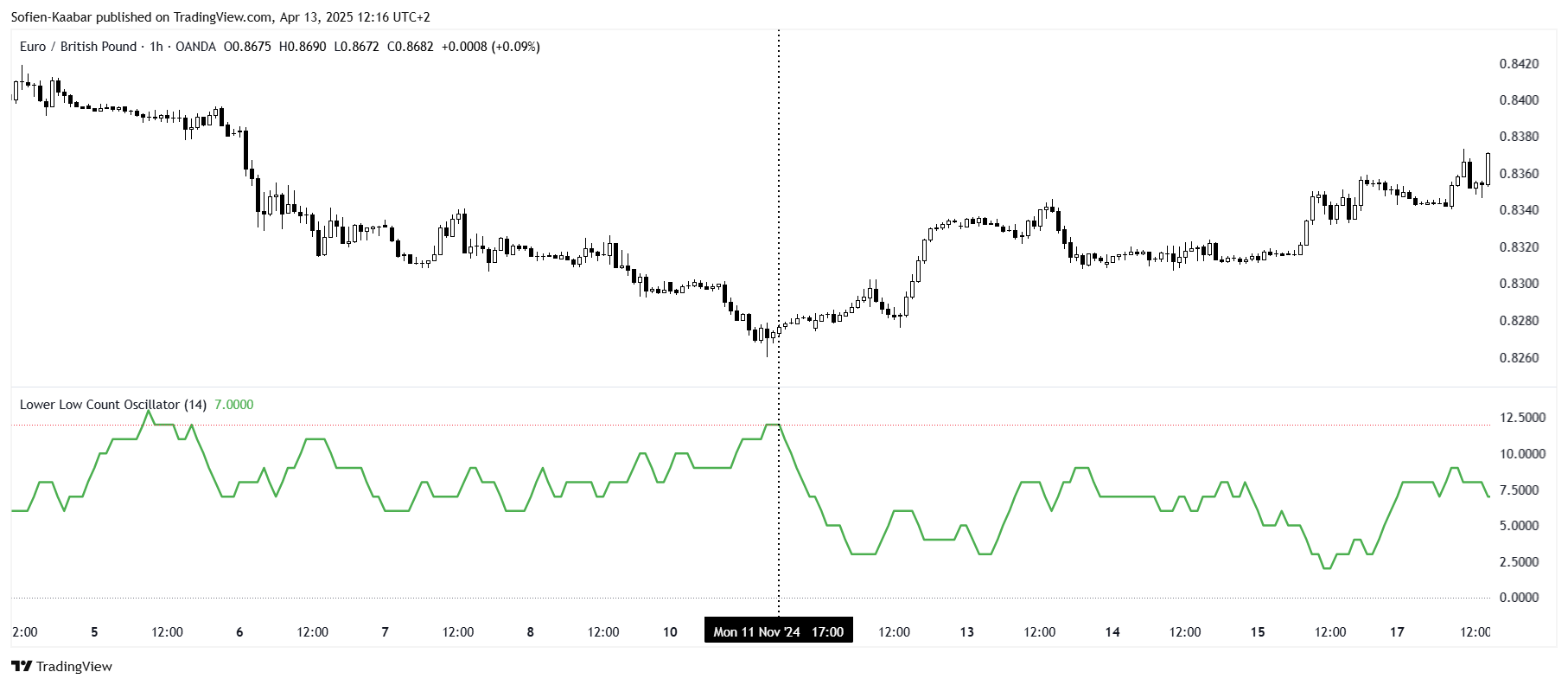How is Time Used to Predict Market Reactions?
Let's Create a Simple Timing Indicator for Market Reversals
Timing is one of technical analysis’ crucial elements. Basic indicators can be created to try to understand the duration of the market’s oversold or overbought levels. This article presents a way to find bullish signals using timing and the market’s lows.
Creating the Custom Timing Indicator
This will be a short discussion as the principle is very simple. We will create a condition that calculates the number of the lows that are lower than the lows two periods ago on a rolling basis. Then, whenever we see a flattening in that calculation, we can consider it to be a bullish signal. Let’s check out the code first.
//@version=6
indicator("Lower Low Count Oscillator", overlay=false)
// === INPUTS ===
length = input.int(14, "Lookback Period", minval=1)
// === LOGIC ===
// Count the number of times over 'length' bars where:
// current low is lower than the low two bars ago
counter = 0
for i = 0 to length - 1
condition = low[i] < low[i + 2]
counter += condition ? 1 : 0
// Normalize to 0–100 scale if desired
normalized = 100 * counter / length
// === PLOT ===
plot(counter, title="Lower Low Count", color=color.green, linewidth=2)
hline(12, "Max", color=color.red, linestyle=hline.style_dotted)
hline(0, "Min", color=color.gray, linestyle=hline.style_dotted)
Therefore, whenever the indicator reaches high levels and flatten, there may be a bullish move to be expected. The following chart shows a few signals.
Check out my newsletter that sends weekly directional views every weekend to highlight the important trading opportunities using a mix between sentiment analysis (COT report, put-call ratio, etc.) and rules-based technical analysis.
This can be your building block towards a more complex timing indicator. For example, add the highs components, tweak the lookback period, add exogenous technical indicators.








This is some next-level thinking! Timing really is everything in the market. Excited to see how your indicator plays out!